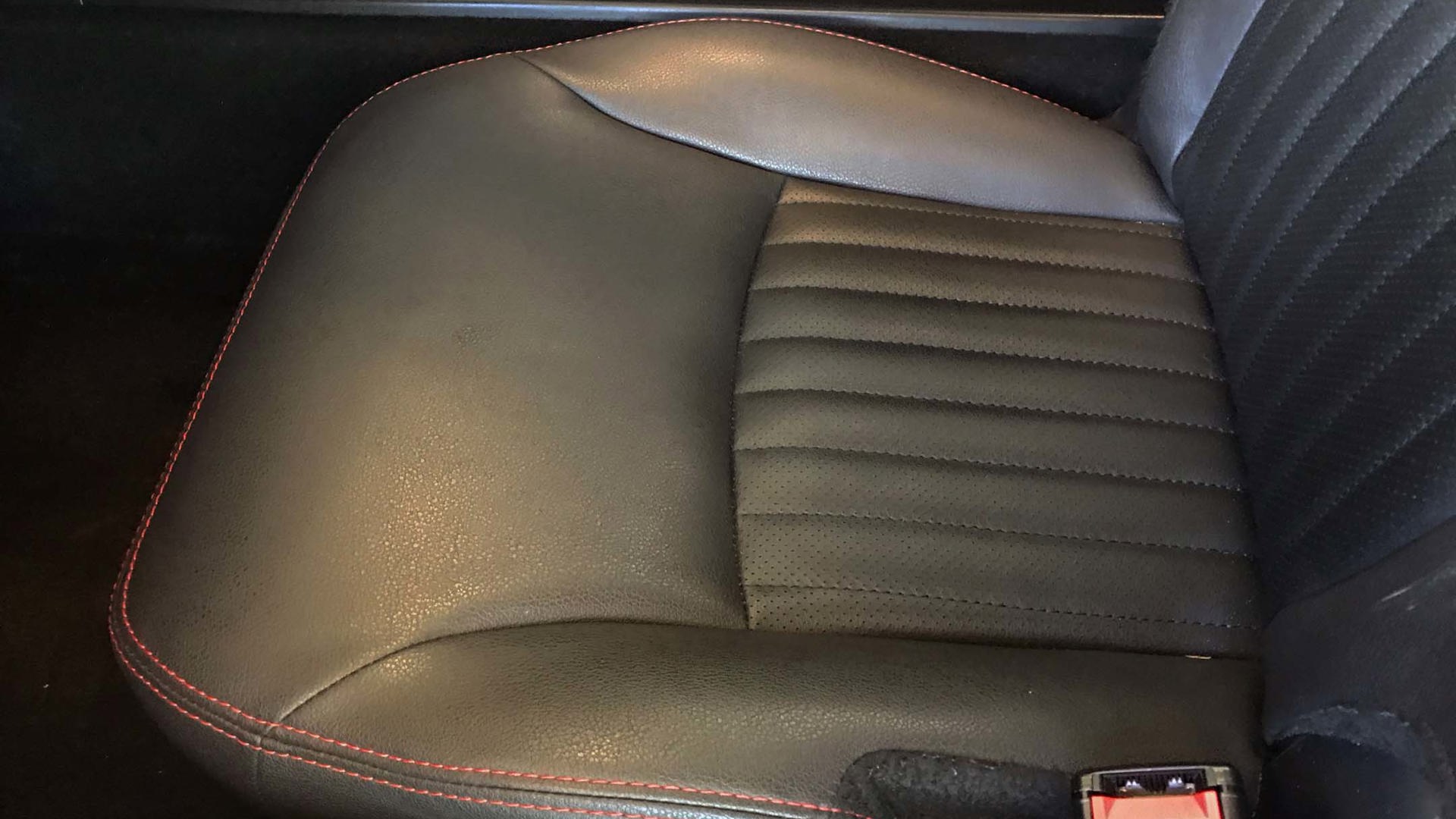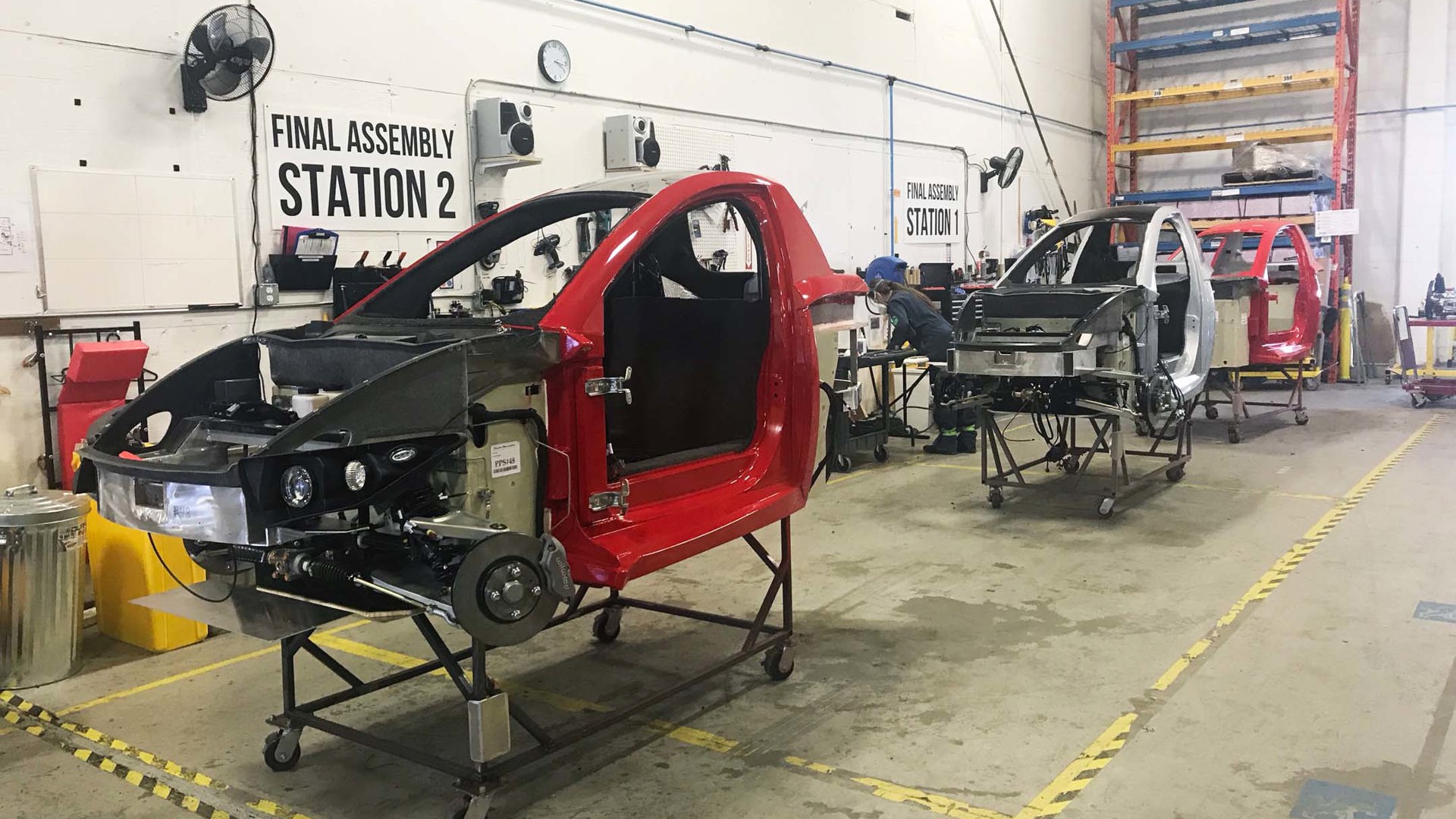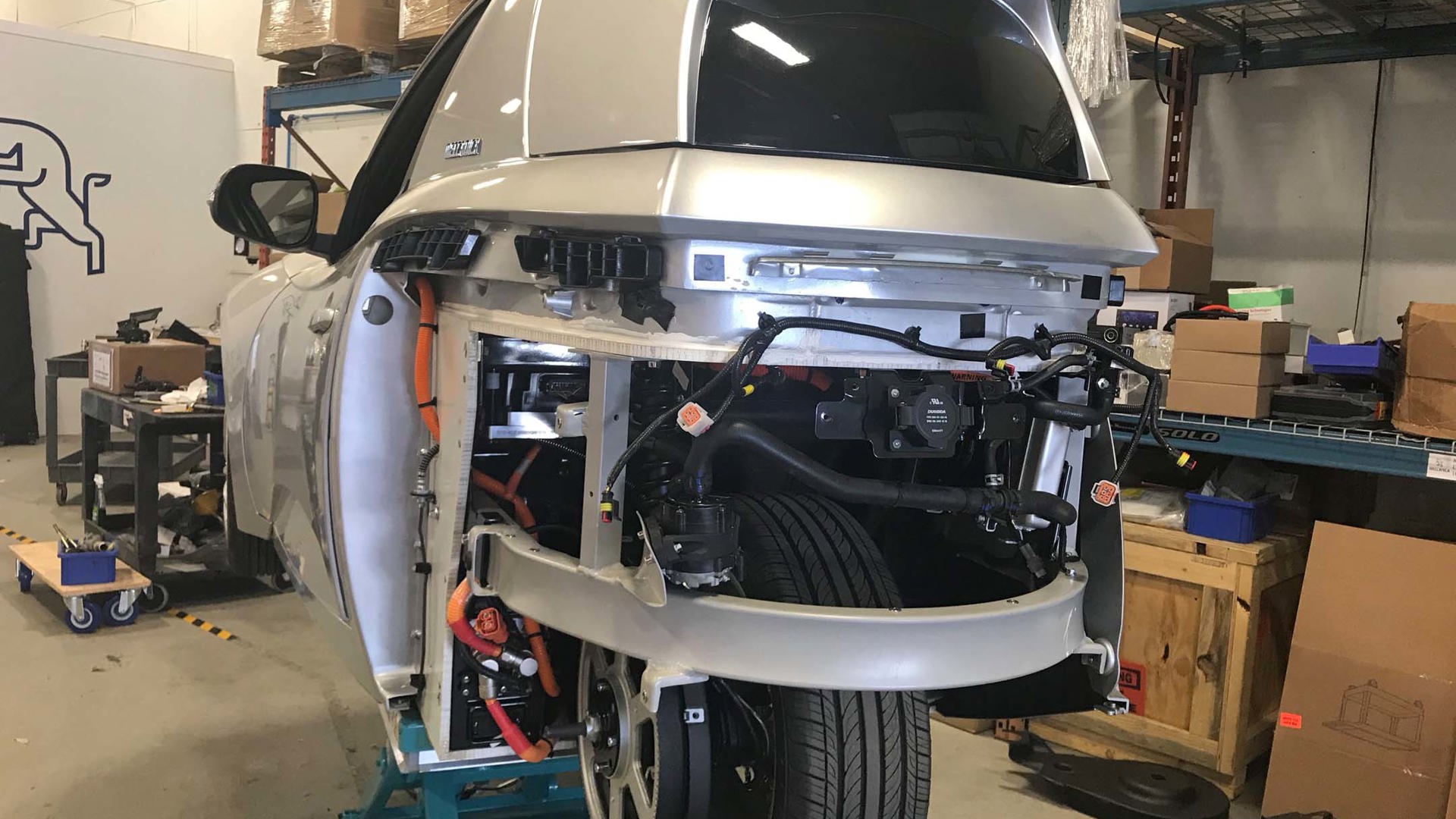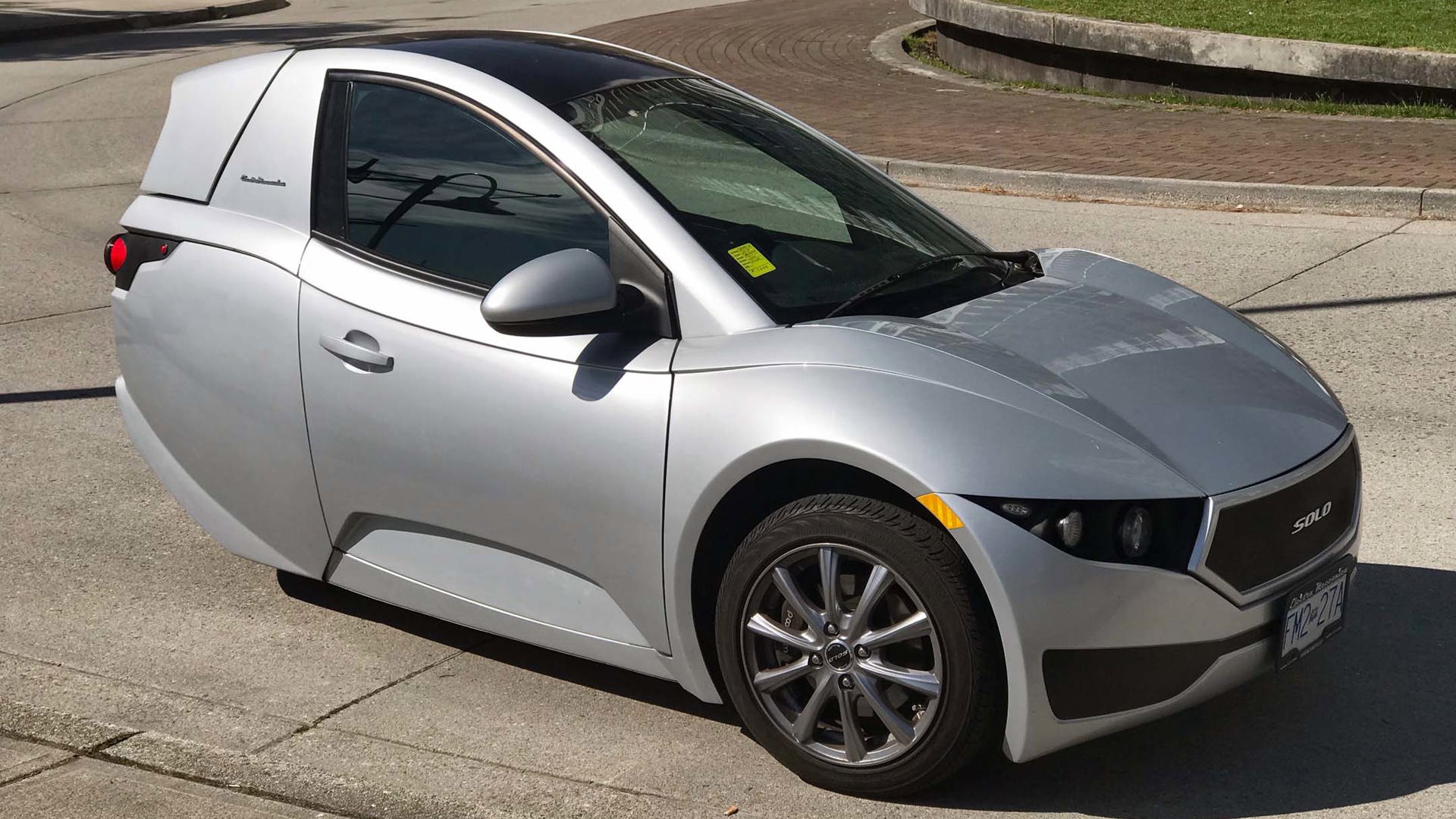VANCOUVER, BC – During our first drive of the three-wheeled, single-seat, battery-powered Electra Meccanica Solo in downtown Vancouver, it was difficult to stop anywhere without drawing a large crowd of curious onlookers. “What is it? How much is it? Where can I buy one?” they would ask.
Something about the Solo’s three-wheel design – two wheels in the front and one at the back, a small, streamlined body that tapers to the rear and houses a single driver’s seat – fascinates onlookers. Even the bright red $163,000 Electra Meccanica Porsche 356 replica car I had driven earlier that day got less attention than the $20,000 Solo.
That’s right: With an MSRP of $19,998 in Canada and $15,500 in the US, the Solo is the least expensive electric car on the market – and it may even be eligible for Canadian provincial and federal rebates when it goes on sale in Canada later this year. Electra Meccanica currently has over 20,000 pre-orders for the Solo in North America, secured by a refundable $250 deposit.
The Solo I drove was a first-generation prototype model built in Electra Meccanica’s plant in New Westminster, BC. Electra Meccanica has built about 50 pre-production prototypes in Vancouver and sold about 17 to private owners and four more to car-share companies. The rest served as test vehicles and crash-test candidates.
Final production, second-generation Solos are now being built in Chongqing, China, by Electra Meccanica’s business partner, Zongshen Industrial Group. So far, about 50 early production second-generation models have been built and the first one was recently sold in Los Angeles. If demand warrants, Electra Meccanica plans to produce 75,000 Solo electric vehicles in Chongqing over the next three years.
Unfortunately, availability of the second-gen Solo in Canada has been delayed by government red tape. While the new Solo is classified as a motorcycle or “autocycle” in the US, Transport Canada hasn’t yet decided whether the Solo can be certified as a car or a motorcycle, or a combination of both. Electra Meccanica expects Canada to make a decision soon so that the Solo can go on sale by the end of the year. Once certification is granted, the Solo may then be eligible for Canadian federal and provincial EV rebates, which would make it ridiculously affordable.
The idea for the three-wheel Solo was the brainchild of Jerry Kroll, an American entrepreneur who developed electric drivetrain technology for race cars. In 2012, Kroll teamed up with Vancouver’s Henry Reisner, President of Intermeccanica – the small but well-known Canadian manufacturer of replica Porsche 356 sports cars and VW Kubelwagens – to design and build the Solo.
The decision to develop an electric car with three wheels and one seat was a matter of economy and efficiency, says Reisner. “Low-cost zero-emissions commuting requires economical packaging … and three wheels is the solution that best fit the requirement,” he explained. “Our market research shows that 83 percent of North American commuters drive alone – you do the math!”
Kroll feels strongly that its green credentials will give it a strong market appeal. “These vehicles are designed to be a ‘World Car’ solution to inexpensive electric transportation and a small footprint answer to urban congestion and parking.”
Though it’s likely to appeal mostly to urban commuters, Reisner anticipates demand from both consumers and corporations. “Consumers and businesses (are) looking to reduce their commuting costs … and looking to lower their personal carbon footprint. As a commercial vehicle the uses are endless – from ‘last mile’ delivery to transporting skilled workers to job sites. Car-sharing is another excellent use for a small single-passenger vehicle.”
Just like a regular car, the Solo has a steering wheel, accelerator pedal, and brake pedal. Conveniently, you can get into the Solo’s driver’s seat from either side (which should make it easy to sell in overseas right-hand-drive markets). You need to be somewhat nimble to step over the wide door sill and into the low driver’s seat, and the narrow cabin feels somewhat like a fighter jet cockpit, though not claustrophobic. There’s plenty of headroom, legroom and hip room. Visibility to the front and sides is good.
After turning the ignition key and releasing the handbrake, the driver selects Drive by rotating a round dial on the right side of the dash marked R, N, D. There is no P (Park) setting. Squeeze the accelerator pedal and the car whisks away with a slight whir and a rubbing sound from the rear belt that drives the single rear wheel. Power is provided by an 82 hp electric motor with energy supplied via a 17.3 kWh lithium-ion battery. Acceleration is brisk: According to the company, the Solo has a zero to 100 km/h time of eight seconds, and a top speed of 130 km/h. Decelerating is accompanied by a slight whine from the electric motor.
The battery can be charged in three hours with a 220/240-volt charger and standard J1772 connector which plugs in behind the rear licence plate. The Solo has a maximum driving range of 160 km.
The first-gen prototype model we tested didn’t have the finished interior of the second-gen Solo, which will come with such niceties as standard power steering, power brakes, air conditioning, heated seat, power windows, AM/FM radio with Bluetooth, CD player, and USB port, digital instrument cluster, rear-view camera, remote keyless entry, heated mirrors, and a small 160 L trunk behind the driver.
Anticipating that some people might be worried that a three-wheeled car is prone to rollover, Electra Meccanica makes a point of stressing that the Solo has a wide track in the front and has a low centre of gravity which enhances stability. During our brief test drive, the Solo felt low to the ground and stable when cornering, with a tight turning circle. As the front of the Solo is wider than the rear, some caution needs to be taken backing into a parking space. Judging its width by looking in the side mirror can be misleading.
Reisner says the Solo meets all North American automotive crash standards. The Solo is equipped with safety features like an integrated roll cage, side impact rails, a rear-view back-up camera, disc brakes, an electric parking brake, seat belt, and daytime running lights. “EMV has completed Solo certification in the US and is continuing with certification in other markets which includes crash testing,” he notes.
However, the Solo doesn’t have a driver’s airbag as vehicles under 2,000 lb are not required to have them. “We are currently developing airbags for the side windows, as well as an external airbag to protect pedestrians,” says Reisner.
“How would the Solo fare in a sub-zero Canadian winter?” I asked. “Electra Meccanica recommends driving the Solo on snow and ice-free roads only,” says Reisner. “All-season tires are standard fitment.”
Though the Solo is just entering production now, Electra Meccanica is already working on a Super Solo which will have gull-wing doors and two seats. While three-wheel vehicles have had limited success in the past, the Solo’s combination of electric drivetrain, modern features, and low price could change all that.




























































